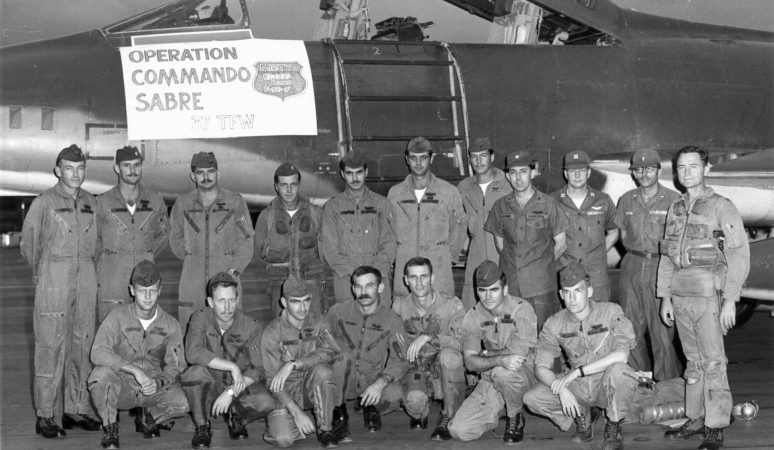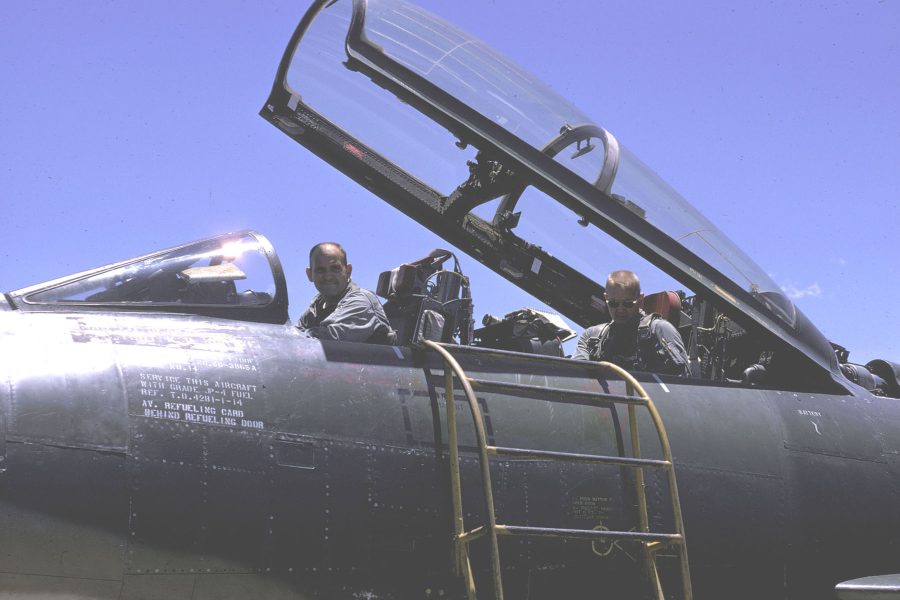When Capt. Ronald R. Fogleman volunteered to fly with the elite Misty Forward Air Controllers in the Vietnam War, he did so because he wanted “a little bit of excitement.”
What the young officer—who would go on to become a four-star general and Chief of Staff of the Air Force—didn’t expect was how the unit trained new members in part by flying them over North Vietnamese anti-aircraft gunners with poor accuracy.
The Misty FACs were known for flying high-risk missions over the heavily defended Ho Chi Minh Trail. Their job was to fly low and fast, often exposed to 12.7mm, 23mm, and 37mm anti-aircraft fire, to find enemy supply trucks hidden in the dense jungle and call in airstrikes to destroy them.
Fogleman arrived at the unit in late 1968 and got a crash course of flights over known North Vietnamese gun positions. “Once you got to the Mistys, you flew your first five rides in the back seat,” Fogleman said at a Heritage Foundation event hosted at the Joint Base Andrews Air Show this month. “And believe it or not, the Mistys had certain guns that they used for training aids. These guys were so bad that we told people never kill that gun because it’s a training aid.”
“But that’s how you learn the area,” Fogleman added. “You learn the guns, and our job was to find targets. It was on-the-job training.”
The Misty FACs began operations over North Vietnam and Laos in June 1967 with the formation of Detachment 1, 416th Tactical Fighter Squadron at Phu Cat Air Base in South Vietnam. At the time, forward air controllers were flying slow-moving, propeller-driven aircraft, but losses were too high. The Mistys began flying jet-propelled F-100D Super Sabre aircraft and survivability improved, Fogleman said, “but the fact of the matter is, we still had a lot of airplanes shot down, and it was kind of the challenge.”
“When you’re in the fighter business, you want to be where the action is,” he added.
Retired Brig. Gen. Ross C. Detwiler described himself as a “bonehead lieutenant” just out of flight training with a total of 240 flying hours when he arrived in Vietnam in May 1968. A friend serving with the unit convinced him to join, telling Detwiler “you belong up there” with the Mistys.
“I was based in the 416th at Phu Cat, so I heard of these guys. I hung with these guys, and I wanted to be part of it,” he said. But Mistys had to be flight leads and instructor pilots with 400 hours; Detwiler was neither. A short meeting with the squadron commander changed that, and with “two sweeps of the pen. I’m an instructor piloting and a flight lead with 400 hours and I joined Mistys.”
The average four-month tour for Misty FACs was intense, with two-man crews flying six sorties a day. “Just to maintain the schedule, you needed 12 pilots a day,” Fogleman said. “There were normally 15 or 16 of us there, so if somebody got sick or something, you could end up logging a lot of time.”

Trying to find enemy trucks that were hidden by day in the thick jungle was tedious detective work, Fogleman said, describing how he learned to track enemy truck movements by looking for clues at the river crossings.
“If there was water splashed up on the south side of a river crossing, you knew that they were moving south from that point; then you would go down to the next river and see if there was the water on the south side or was it now on the north side?” he said. “If it was on the north side, you knew that there were trucks somewhere between those two rivers, and then it was a question of going in and getting down and finding them.”
The enemy trucks would often try to escape the area before strike fighters would arrive on scene, Detwiler said. F-100s were armed with 20mm cannons for strafing but only when it was absolutely necessary—a rule many aviators stretched.
“You have young, aggressive fighter pilots who are told ‘don’t use your strafe unless you have to,” Detwiler said. “Almost every flight came back with no strafe left.”
Yet that aggression could be deadly.
“We lost two airplanes and three guys in two months, both the same way—they’d go in low level, being aggressive, strafe, get hit, and disappear in the jungle,” Detwiler said. “And it was always from being aggressive at a time when there was no one there to watch what happened to you.”
Enemy ground defenses shot down about 25 percent of 155 Misty FACs flying between 1967 and 1970.
Fogleman said it was particularly gratifying to assist with search and rescue missions whenever fellow Mistys or strike fighters got shot down. The unit’s job was to destroy any enemy gun positions in the area before the A-1 Skyraiders and rescue helicopters would arrive.
But if anyone was shot down close to dusk, they would have to wait in the jungle until the next morning for rescue. Whichever Misty crew saw the shootdown was assigned to fly out the next morning because they knew the last location of the downed Airmen.
“You didn’t know during the night whether the guy had been captured or killed,” Fogleman said. “And it was the sweetest sound in the world when that guy would come up [on the radio] and say ‘Misty, this is Buick Two. I’m still here.’ Then you would go ‘Buick Two, rescue forces on the way.’ And then you would go to work, trying to kill the guns around there, so they could get a helicopter in and rescue the guy.”
On the other hand, Detwiler recalled that for the two SAR missions he worked, “both times they never came up,” he said. “It’s a very empty feeling.”
Fogleman and Detwiler avoided getting shot down during their tours with the Mistys. But both fell victim to North Vietnamese anti-aircraft fire while flying in the war. In Fogleman’s case, his F-100 was downed in a hail of anti-aircraft fire during a mission over the Ho Chi Mihn trail on Sept. 12, 1968, two months before he joined the Mistys.
“I got shot down because of stupidity,” Fogleman said. “One of the things that you learn very early in the fighter business, is you never tried to duel with a gun.”
He bailed out, landed in the jungle, and hid from nearby enemy forces by submerging in a canal. The only aircraft in the area were two AH-1 Cobra gunships. One landed, and Fogleman secured himself to the open bay ammo door on the outside.
“They flew me 20 miles to a Special Forces camp,” Fogleman said. “It was a great ride.” He returned to duty the next day.
Detwiler was shot down April 22, 1969, after had finished his tour with the Mistys. He was leading a strike group over Laos when his F-100 was hit. He managed to fly the aircraft away from enemy anti-aircraft positions.
“One thing we took a lot of pride in Misty was when people came to pick us up, they usually didn’t have to kill any guns,” he said. “We usually stayed with the airplane long enough to get somewhere safe.”
After landing in the dense jungle, “it took the helicopter guys 11 minutes to cut me out of the trees,” he said.
There were good times too, Detwiler said. “Back on the base, things got interesting because we owned Phu Cat. The Phu Cat bars were home to the Misty FACs; everyone else was welcome.”
“We dominated the pool table. We had the front rows whenever the USO shows came by,” Detwiler added. “That’s what dragged me into it. These guys are running the show. I want to be part of the big team here. It was a very, very tight group.”
To Fogleman, the Mistys “attracted a certain group of people.”
“There’s a famous, sort of infamous picture of the Mistys of my generation,” Fogleman said, describing his comrades in the photo. There was Maj. Merrill “Tony” McPeak, who also served as Air Force Chief of Staff. Beside McPeak stands then-Col. Wilbur I. “Bill” Creech, who also earned four stars and became the commander of Tactical Air Command. Also in the picture is then Col. Leroy J. Manor, who became a lieutenant general and the chief of staff of Pacific Command.
“And if you look closely at that picture, you’re going to see a couple of the guys standing there with 1,000-yard stares,” Fogleman said. “That was my generation of guys.”



